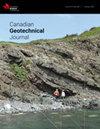Submarine landslides: advances and challenges
IF 3.5
3区 工程技术
Q2 ENGINEERING, GEOLOGICAL
引用次数: 688
Abstract
Due to the recent development of well-integrated surveying techniques of the sea floor, significant improvements were achieved in mapping and describing the morphology and architecture of submarine mass movements. Except for the occurrence of turbidity currents, the aquatic environment (marine and fresh water) experiences the same type of mass failure as that found on land. Submarine mass movements, however, can have run-out distances in excess of 100 km, so their impact on any offshore activity needs to be integrated over a wide area. This great mobility of submarine mass movements is still not very well understood, particularly for cases like the far-reaching debris flows mapped on the Mississippi Fan and the large submarine rock avalanches found around many volcanic islands. A major challenge ahead is the integration of mass movement mechanics in an appropriate evaluation of the hazard so that proper risk assessment methodologies can be developed and implemented for various human activities offshore, i...海底滑坡:进展与挑战
由于近年来海底综合测量技术的发展,在绘制和描述海底物质运动的形态和结构方面取得了重大进展。除了浊流的发生,水生环境(海洋和淡水)经历了与陆地相同类型的集体破坏。然而,潜艇群的移动距离可能超过100公里,因此它们对任何海上活动的影响需要在一个广泛的区域内进行综合。这种海底物质运动的巨大流动性仍然没有得到很好的理解,特别是像密西西比河扇上绘制的深远的泥石流和在许多火山岛周围发现的大型海底岩石雪崩这样的例子。未来面临的主要挑战是在适当的危害评估中整合大量运动力学,以便为各种海上人类活动开发和实施适当的风险评估方法。
本文章由计算机程序翻译,如有差异,请以英文原文为准。
求助全文
约1分钟内获得全文
求助全文
来源期刊

Canadian Geotechnical Journal
地学-地球科学综合
CiteScore
7.20
自引率
5.60%
发文量
163
审稿时长
7.5 months
期刊介绍:
The Canadian Geotechnical Journal features articles, notes, reviews, and discussions related to new developments in geotechnical and geoenvironmental engineering, and applied sciences. The topics of papers written by researchers and engineers/scientists active in industry include soil and rock mechanics, material properties and fundamental behaviour, site characterization, foundations, excavations, tunnels, dams and embankments, slopes, landslides, geological and rock engineering, ground improvement, hydrogeology and contaminant hydrogeology, geochemistry, waste management, geosynthetics, offshore engineering, ice, frozen ground and northern engineering, risk and reliability applications, and physical and numerical modelling.
Contributions that have practical relevance are preferred, including case records. Purely theoretical contributions are not generally published unless they are on a topic of special interest (like unsaturated soil mechanics or cold regions geotechnics) or they have direct practical value.
 求助内容:
求助内容: 应助结果提醒方式:
应助结果提醒方式:


